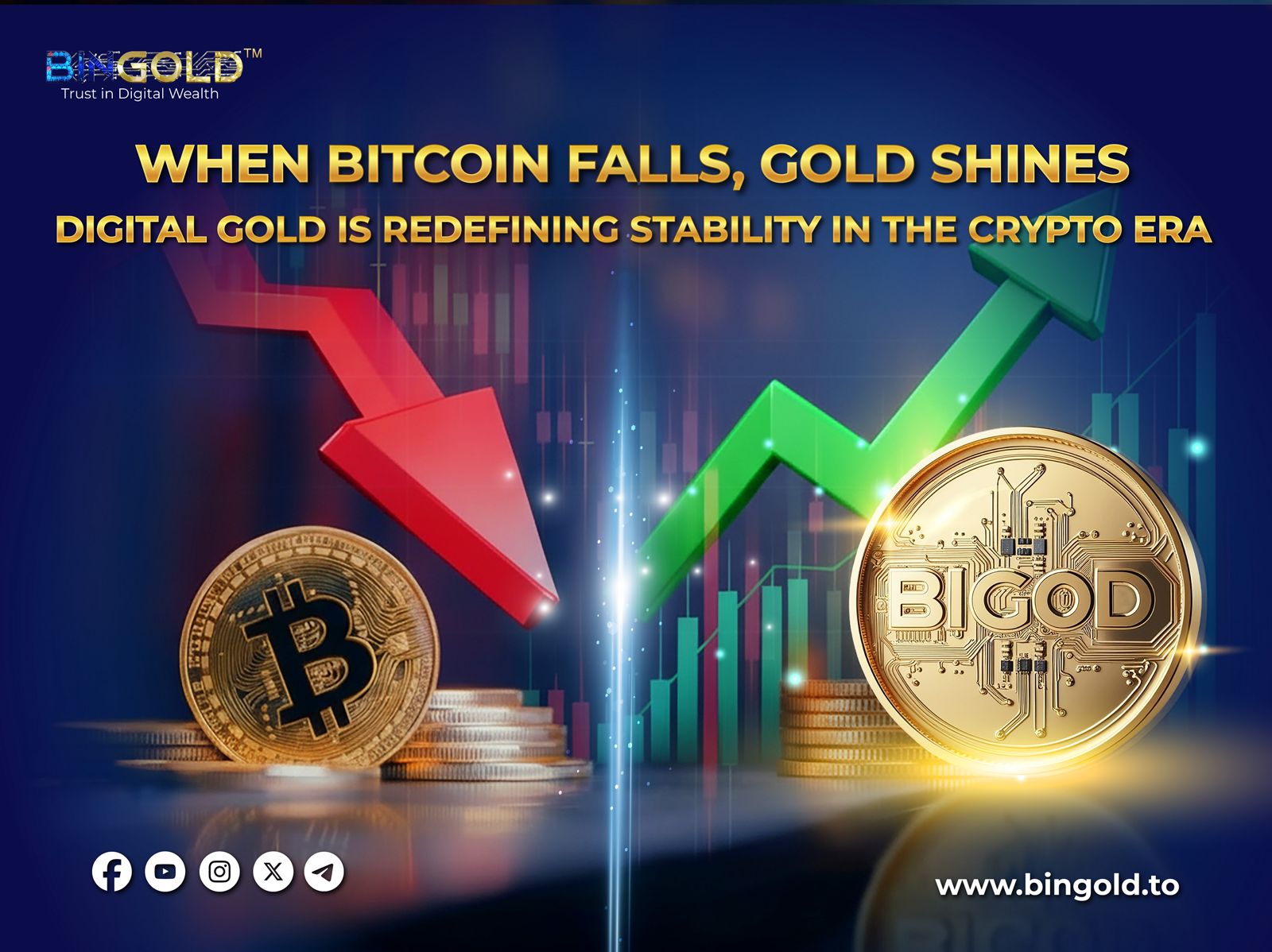When Bitcoin Falls, Gold Shines: Why Digital Gold Is the New Safe Haven


The crypto world watched in shock as Bitcoin plunged nearly 10% on October 10, 2025, erasing billions in market value within hours. Altcoins followed the freefall, and fear swept through the community once again. But amid the chaos, one asset stood resilient — Digital Gold.
While Bitcoin’s volatility tested investor nerves, digital gold tokens—backed by real, verifiable gold reserves—remained steady, proving that stability and innovation can coexist on the blockchain.
Bitcoin has always symbolized financial freedom — but that freedom often comes at a cost: extreme volatility.
The same decentralized design that makes Bitcoin revolutionary also exposes it to speculative swings, regulatory shocks, and investor sentiment shifts.
From the 2011 Mt. Gox crash to the 2025 flash drop, Bitcoin has repeatedly reminded the world that it’s not for the faint-hearted.
Gold has been humanity’s most trusted store of value for over 5,000 years. Unlike digital tokens or fiat currencies, its value doesn’t depend on algorithms, politics, or public opinion — it depends on scarcity and stability.
During every financial storm, from the 2008 crisis to the 2025 crypto crash, gold’s value either holds or rises. It’s no surprise that investors, when faced with uncertainty, still “run to gold.”
Digital gold takes this timeless trust and upgrades it for the digital age. Each token is backed by real gold stored in secure vaults — and recorded transparently on the blockchain.
Unlike physical gold, it’s divisible, transferable, and borderless. Unlike Bitcoin, it’s stable and asset-backed.
Projects like BIGOD are leading this transformation — making gold liquid, traceable, and accessible to every investor with just a wallet address.
During market crashes, stability becomes the ultimate currency. Digital gold offers:
For investors burned by crypto’s ups and downs, digital gold provides the balance between innovation and safety.
The rise of digital gold is part of a larger movement — the tokenization of real-world assets. As investors seek stability in a digital economy, gold-backed tokens may become the new “digital dollar.”
Analysts predict that by 2030, trillions in physical assets (like real estate, commodities, and art) will be represented on-chain — with digital gold leading the way as the most trusted digital store of value.
The October 2025 crash reminded us that not all digital assets are equal. Bitcoin may dominate headlines, but digital gold is quietly building the foundation for a more stable future.
In times of chaos, trust matters — and gold has always delivered that.
Now, with blockchain, it’s delivering it digitally.
When Bitcoin falls, gold doesn’t just shine — it evolves. 🌕✨